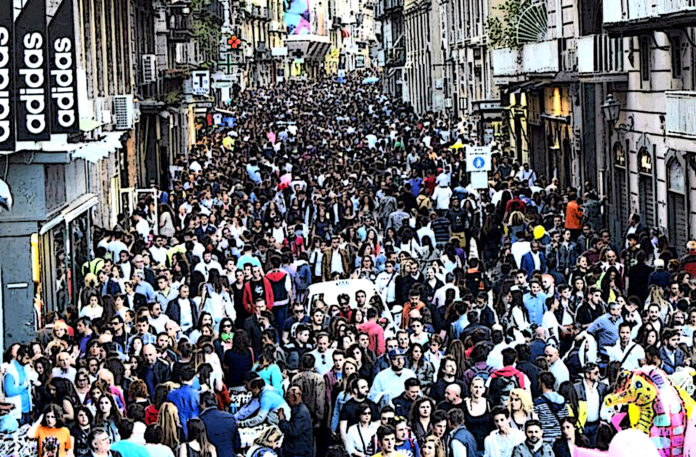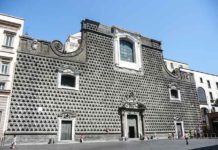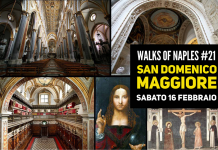The magic of via Toledo, the splendour of via dei Mille, the charm of via Chiaja. It is worth spending an afternoon walking in these typical streets of Naples, doing the so-called “struscio”. What is struscio? It is window-shopping, a Sunday promenade. For in Naples it is normal passing by fashion boutiques just to have a look, and obviously being looked at!
The term “struscio” used to be referred to the Holy Thursday walk, an old-age rite taking place in via Toledo. This custom was introduced by the Viceroy who, following a Spanish tradition, had prohibited the circulation of carriages and horses during the Easter holidays, obliging the believers to walk on foot. Due to the great number of people walking past via Toledo, especially on Holy Thursday, the walk was so slow that feet were shuffled along the way. This fact, together with the fabrics of the new clothes against each other, produced the characteristic sound of rubbing: the “struscio” was born.
With time, the walk became an occasion for young people to buy new holiday clothes, and then, little by little, it has simply taken the meaning of window-shopping. Nowadays, every occasion is good to enjoy the struscio of Partenope. And every walk starts from via Toledo. Or via Roma, if you prefer.
The street wanted by the Viceroy Pedro Álvarez de Toledo in 1536, alternates two names: via Toledo, like the founder, or via Roma, so called from 1870 to 1980 in honour of the new capital of the Reign of Italy. Genuine Neapolitans prefer to call it “via Toledo”.
This street, one of the principal routes of Naples, followed the old western Aragonese walls, in part demolished during the works wanted by don Pedro. Today, it goes from Piazza Dante to piazza Trieste e Trento, bordering monuments, churches and noble residences, like Galleria Umberto I, Palazzo Zevallos, Santa Maria delle Grazie Church, Palazzo Cavalcanti, Palazzo Doria d’Angri and Basilica of Spirito Santo.
Since the XVI century, via Toledo has represented the centre of Neapolitan culture, being one of the destinations of the “Grand Tour” travellers. In 2012 it has become known worldwide thanks to the homonymous underground station, considered the most beautiful of whole Europe. (translated by Claudia Romagnuolo)

 Italiano
Italiano














